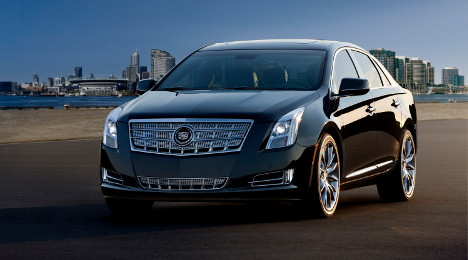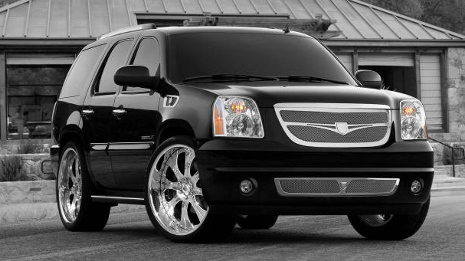Expanding used supply means lower pre-owned prices — but analysts say trends on the new-car side of the market will serve to push used rates down every further.
Analysts at ALG and RVI both cited new-car sales as a factor that will lower used prices in the coming years.
According to ALG, this trend has reappeared for the first time since 2008.
ALG analysts say a “wave” of newer vehicles from trade-ins has started to flood the secondhand market and will gradually bring resale values back down to pre-recession levels.
“The continued strength of new-car sales is increasing the availability of high-quality used cars as shoppers continue to trade in their old vehicles,” said Larry Dominique, president of ALG and executive vice president at TrueCar. “Additionally, because of the popularity of short 24- and 36-month leases, the drought of used-car supply is already starting to subside. As a result, we expect a steady decline in used-vehicle prices.”
And RVI analysts said in the latest Risk Outlook report that as new-car competition increases and new-car prices decline — pushing many used customers to the new market — this trend will also play a part in pushing used prices down even further, as well.
Residuals are also expected to have an impact on used-car prices.
According to ALG, by 2017 the average new vehicle will retain 49.4 percent of its value after three years, compared to the 54.6-percent retention recorded for vehicles through June 2014.
Used units will follow suit as ALG predicts growing supply will put the residual average back at 46 percent — the pre-recession rate — by 2019.
“The lower residual values will create a greater gulf between used- and new-vehicle prices, which could steer more consumers to purchase used vehicles,” said Dominique. “Consequently, we expect automakers to increase new-car incentives to keep up their current sales pace.”
ALG is predicting used prices will fall by 5.2 percent by 2017. Over at RVI, the company expects nominal used prices to drop by 10 percent by 2017.
For more on used price movement, see the following Auto Remarketing story:
Used Prices Expected to Fall by 10% by 2019
Though the temperature may be rising as we head into the last month of summer, auction prices seem to be dropping on a weekly basis.
According to NADA’s AuctionNet data, prices are expected to drop by 0.3 percent, or $50, this week.
The losses will be led by the luxury car segment, NADA automotive analyst David Paris told Auto Remarketing.
These premium cars are expected to see prices drop by an average of 1.6 percent, or $325, this week.
NADA predicts the compact utilities will see the second largest price decline, dropping by 1 percent, or $150.
Smaller declines are expected in all other segments, Paris said.
In fact, all segments are expected to see prices drop but two: the midsize cars and midsize vans, which are expected to see prices rise by 0.2 percent and 0.3 percent, respectively.
Four- and two-week AuctionNet wholesale average prices are created by collecting all AuctionNet records for vehicles up to five years of age for a specified period of time. Prices are then adjusted for changes in mileage and mix.
Current week prices are based on NADA's proprietary used-vehicle value model which includes assumptions for new-vehicle prices, used-vehicle supply, gasoline prices, and other economic factors.

| NADA Segment |
Average AuctionNet® Wholesale Price |
2-Week v. Current |
| Compact Car |
$10,625 |
$10,575 |
$10,500 |
-0.7% |
($75) |
| Compact Utility |
$14,625 |
$14,625 |
$14,475 |
-1.0% |
($150) |
| Industry |
$15,525 |
$15,475 |
$15,425 |
-0.3% |
($50) |
| Large Pickup |
$22,550 |
$22,400 |
$22,325 |
-0.3% |
($75) |
| Large SUV |
$28,025 |
$27,775 |
$27,600 |
-0.6% |
($175) |
| Luxury Car |
$20,575 |
$20,375 |
$20,050 |
-1.6% |
($325) |
| Luxury Utility |
$25,675 |
$25,625 |
$25,550 |
-0.3% |
($75) |
| Mid-Size Car |
$12,100 |
$12,000 |
$12,025 |
0.2% |
$25 |
| Mid-Size Utility |
$18,625 |
$18,625 |
$18,550 |
-0.4% |
($75) |
| Mid-Size Van |
$15,000 |
$14,875 |
$14,925 |
0.3% |
$50 |
Elcometer, an inspection equipment provider to the coatings industry, has worked in the remarketing space for about two decades, and its history in the auto manufacturing industry dates back even further.
And now, the company is going even deeper into remarketing. Elcometer will soon be launching a proprietary inspection tool for appraisers, buyers, finance companies and banks that is designed to calculate the diminished value of a vehicle from previous paint work.
This product, called the Elcometer Index Value, would provide a single number that gauges the severity of paint and body work that has been done on a vehicle.
Auto Remarketing recently caught up with Joe Walker, vice president of Elcometer, to talk about this tool, which will likely be launched in early 2015.
“Now, with the big issue of diminished value for paint and body work, that’s why we came up with the Elcometer Index Value,” Walker said. “So, if you’re a lender, and you’re going to lend on a used car, it might be nice to know if that vehicle has had previous paint work or not, because it could influence the amount of money that they’re going to see on the back-end. It allows the lender the opportunity to calculate diminished value before (lending on that vehicle).
“Just pick a high-end car, say a Mercedes or a Lexus. Is the same make and model worth the same amount of money if it’s been in an accident, as opposed to if it’s pristine? The answer is usually no,” he said. “But until the Elcometer Index Value, that diminished value was never able to be compared against a database of like vehicles and what they’ve sold for on the auction market. This gives lenders the opportunity to actually calculate the value of a vehicle precisely.”
Many tools have calculations for things like frame damage, mileage or tire wear, but Walker said there hadn’t previously been any metric telling diminished value from paint and body work — “yet most auto auction buyers are using one of our paint gauges to examine a vehicle before they purchase,” he noted.
“The Elcometer Index Value allows you to gauge severity of damage,” he added. “So if it’s a minor paintwork issue, it’s going to have a very minor variation in the Elcometer Index Value. If it’s a major body restoration, it’s going to show up in the Elcometer Index Value, as well. And it’s linear between those points.”
More from Elcometer
In other news from the company, Elcometer announced that it is rolling out its new next generation Elcometer 456 coating thickness gauge with Bluetooth connectivity for use on iPhone, iPad and iPod touch devices.
“When used in conjunction with any iOS device running ElcoMaster mobile apps, data from the Elcometer 456 can now be easily and seamlessly transferred to an iOS device,” the company said in the product’s announcement.
Explaining more about ElcoMaster Mobile, officials said this is the company’s free data management app, and users of the app can transfer inspection data from their Elcometer gauges to their iOS device.
ElcoMaster can then instantaneously generate inspection reports, without moving over to a computer.
The company said its new fleet of Made for iPhone inspection gauges are designed to be seamlessly integrated into a customer’s paperless inspection applications. And since Elcometer uses Bluetooth, multiple gauges can be connected simultaneously.
The ElcoMaster Mobile App’s features allow users to do the following, as listed by Elcometer:
— Transfer inspection batches from their gauge to their mobile device to generate PDF reports instantly
— Store live readings directly on to their mobile devices, together with the measurement’s GPS coordinates and instantly plot them on a map – ideal for site inspections
— Add reading limits, photographs, general notes and comments to your inspection data
— E‐mail a PDF report anywhere in the world
“Having the ability to seamlessly generate professional inspection reports from the inspection site in an instant not only provides a competitive advantage to our customers, but also increases productivity as they no longer have to go back to the office to write a report — ElcoMaster does it for them,” said Elcometer managing director Michael Sellars.
The ElcoMaster App can be downloaded for free at the App Store on iPhone, iPad or iPod touch or by going to www.AppStore.com/ElcoMaster.
The summer market is in full force in the lanes as we head toward fall, says Black Book’s Ricky Beggs.
For example, last week, car prices fell by an average of $81 at auction, almost twice the $42 decline during the same period of 2013. According to Black Book data, only once over the past 12 months has the average price decline for cars soared higher: during the week of Sept. 13, when prices fell by an average of $84.
Last week the smallest price drop was seen in the near luxury car segment, which saw a slight decline of $31, or 0.20 percent. Interestingly, this segment had seen greater-than-average price declines for the previous five weeks, Beggs pointed out.
A recent post on Cars.com’s Kicking Tires blog highlighted just how much the market is softening in the lanes and on the lots, as well. The site reported late-model used-car retail prices dipped below an average of $23,000 this month for the first time this year. The average late-model used-car price settled at $22,919 this month, dropping 0.78 percent from June.
The Cars.com post, written by Mike Hanley, said this marks the third month in a row retail used prices have fallen. The car that saw the biggest price drop: the Hyundai Sonata Hybrid, with saw prices drop by 3.2 percent to rest at $19,511.
The hot season normally brings with it softening in auction prices, and this year is no exception. One big driver of dropping prices in the lanes is the arrival of a new model-year.
“To understand this market movement, just remember to look at the calendar and you see August and September bringing us another model year into the market,” Beggs, senior vice president and editorial director at Black Book said during his latest “Beggs on the Used Car Market” report.
And while trucks have experience stronger price retention over the course of 2014, the trucks are beginning to catch up to their smaller counterparts when it comes to price drops.
Beggs pointed out that as the summer weeks pass, trucks are softening, as well. Last week, the truck segments saw an average decline of $59, which is the largest seen since the week ending Feb. 21, according to Black Book data.
The segments with the biggest price drops were the full-size SUVs and the luxury SUVs, which fell by $149 and $148, respectively.
On the other hand, compact pickups performed the best, with only a $2 average price drop this past week.
Overall, though the first half of the year showed strong price retention trends, with depreciation hovering around 4 percent, according to Black Book data, the rate of decline is expected to be significantly higher in the second half of 2014.
“As the economy and the new-car sales continue to improve our forecast of annual depreciation for 2014 we feel will be greater than the solid 12.8 percent of 2013,” Beggs said. Specificallly, Black Book is projecting prices will decline by 13.5 percent in 2014.
To view the latest “Beggs on the Used Car Market” report, see above.
Auction price drops are expected to remain consistent with last week’s movement, with wholesale prices once again predicted to drop by an average of 0.5 percent or $75, according to NADA’s AuctionNet data. But there's one exception.
Interestingly enough, even though overall price declines are predicted to be moderate this week, large pickups are expected to buck the trends and see the biggest price drop.
This segment has shown strong price retention through most all of 2014, but NADA expects this segment to drop by an average of 1 percent, or $225, this week.
In a recent interview with Black Book, ADESA chief economist Tom Kontos predicted price strength for trucks may begin to reverse in coming months, albeit the switch might come slow.
“There is a recovery in supply on the truck side … in that there is a greater availability of those used trucks — this will push prices down in the long run, but now it is actually helping prices because the dealers really need those cars, and independent truckers really need those trucks, as well,” Kontos explained.
In fact, prices for trucks have already started falling for auctions in the Northeast of the country, where Kontos said there is rapidly expanding supply.
“The Northeast has been an area where there is a high concentration of off-lease volumes, but at the same time, that was the part of the country that was impacted the most by weather,” Kontos said. “So that double whammy caused a greater amount of over-supply right now on the ground of used trucks coming out of off-lease and the rental fleets.
This week, smaller price declines are expected in most all other segments — ranging much closer to the industry average, according to NADA.
Midsize vans are expected to follow large pickups with the second-largest price drop, falling an expected $125.
Only one segment is expected to see prices rise at all this week: the midsize utilities. The segment is expected to see prices rise a slight 0.3 percent, or $50.
Large SUV prices are expected to remain level with last week’s results. Smaller declines are expected in all other segments.
Four- and two-week AuctionNet wholesale average prices are created by collecting all AuctionNet records for vehicles up to 5 years of age for a specified period of time. Prices are then adjusted for changes in mileage and mix.
Current week prices are based on NADA's proprietary used-vehicle value model which includes assumptions for new-vehicle prices, used-vehicle supply, gasoline prices and other economic factors.

| NADA Segment |
Average AuctionNet® Wholesale Price |
2-Week v. Current |
| 4-Week Average |
2-Week Average |
Current Week |
% Change |
$ Change |
| $10,700 |
$10,600 |
$10,525 |
-0.7% |
($75) |
| $14,725 |
$14,675 |
$14,625 |
-0.3% |
($50) |
| $15,600 |
$15,525 |
$15,450 |
-0.5% |
($75) |
| $22,550 |
$22,375 |
$22,150 |
-1.0% |
($225) |
| $28,500 |
$28,400 |
$28,400 |
0.0% |
$0 |
| $20,625 |
$20,625 |
$20,600 |
-0.1% |
($25) |
| $25,700 |
$25,725 |
$25,700 |
-0.1% |
($25) |
| $12,175 |
$12,075 |
$12,000 |
-0.6% |
($75) |
| $18,800 |
$18,650 |
$18,700 |
0.3% |
$50 |
| $15,150 |
$14,900 |
$14,775 |
-0.8% |
($125) |
Gas prices are on the way down again, and so are auction prices.
Black Book’s Ricky Beggs pointed this trend out during his latest “Beggs on the Used Car Market” video report, which explained that the market is seeing traditional seasonal movement with price declines picking up during the first three weeks of July.
And after staying relatively high toward the beginning of the summer, gas prices are on the way down, as well, with average gas prices coming in at $3.64 per gallon, which comes in as half a cent less than the year-ago period after last week’s 4.3 cent drop.
Auction prices are showing similar trends as the overall average segment price change last week ccame in at a drop of $103. This marks the largest declining amount since the $108 drop seen during the week ending Jan. 24, according to Black Book data.
Car price declines are picking up as the summer progresses. Beggs, editorial director and senior vice president at Black Book, reported the average decline for the car segments came in at $68 last week, as compared to the previous two weeks, which saw drops of $56 and $45, respectively.
Beggs pointed out this is the highest decline for the car segments since the week ending Jan. 24, when prices dropped by $72.
“After such a strong spring market, the remainder of the year may possibly see slightly larger declines as compared with typical seasonal patterns,” Beggs said.
The compact cars saw the smallest price drop (down $33), perhaps a result of gas prices remaining above $3.60 per gallon.
“This has also been the most consistent moving segment during July with (decreases of) $31 and $20 (respectively) the prior two weeks,” Beggs said.
Truck segment retention is dipping, as well, but at a slightly slower rate.
The trucks saw an average price decline of $54 last week, up from drops of $39 and $20 for the prior to weeks, respectively.
The last time the truck segments saw that large of a drop was the week ending Feb. 21, when prices fell by $67.
Since then, price retention for the truck segments has been consistently strong.
The full-size pickups continue to see some of the strongest pricing, falling by an average of only $20 this past week, after rising by $6 the previous week.
See above for the latest “Beggs on the Used Car Market” report.
As analysts predict that expanding off-lease volume will start pushing downward on used-car prices at a more rapid pace in the second half of the year, auction prices are expected to continue falling this week.
According to NADA AuctionNet data, wholesale prices are expected to drop by an average of 0.5 percent or $75.
David Paris, automotive analysts at NADA Used Car Guide, told Auto Remarketing price losses are expected to be moderate this week.
Although trucks have seen stronger price retention on average this year, the truck segments and midsize vans, interestingly enough, are expected to lead price declines this week.
Each of these segments are predicted to see price drops of 0.8 percent.
The compact cars, compact utilities, luxury cars and midsize utilities are expected to follow closely behind with average drops of 0.7 percent each.
And even though gas prices remain high — sitting at $3.64 per gallon this week, according to the Energy Information Administration — compact car rates are not seeing a boost in price retention.
In fact, there is only one segment predicted to see prices rise this week: large SUVs, which should see a 0.1-percent or $25 increase, said Paris.
Smaller declines are expected in all other segments.
Analysts are predicting these price declines will continue through the year as used supply continues to expand.
Manheim chief economist Tom Webb said in a recent conference call that although off-lease volume grew at a steady pace at auction so far in 2014, Manheim expects this rate to pick up even more during the second half of the year.
“They (off-lease volumes) are continuing to grow — we expected the increases in the back half of this year would be more than the first half, and that is the case,” said Webb, chief economist at Manheim Consulting. “Certainly the off-lease volume is tracking along with expectations. The percentage of those that end up in a traditional auction process is pretty much in line with expectations, as well.”
For more on predicted off-lease trends for the second half of the year, see the following Auto Remarketing story:
Off-Lease Volume to Get Boost in Second Half
Four- and two-week AuctionNet wholesale average prices are created by collecting all AuctionNet records for vehicles up to five years of age for a specified period of time. Prices are then adjusted for changes in mileage and mix.
Current week prices are based on NADA's proprietary used-vehicle value model which includes assumptions for new-vehicle prices, used-vehicle supply, gasoline prices, and other economic factors.

| NADA Segment |
Average AuctionNet® Wholesale Price |
2-Week v. Current |
| 4-Week Average |
2-Week Average |
Current Week |
% Change |
$ Change |
| Compact Car |
$10,850 |
$10,750 |
$10,675 |
-0.7% |
($75) |
| Compact Utility |
$14,800 |
$14,675 |
$14,575 |
-0.7% |
($100) |
| Industry |
$15,675 |
$15,575 |
$15,500 |
-0.5% |
($75) |
| Large Pickup |
$22,700 |
$22,700 |
$22,525 |
-0.8% |
($175) |
| Large SUV |
$28,450 |
$28,350 |
$28,375 |
0.1% |
$25 |
| Luxury Car |
$20,650 |
$20,675 |
$20,525 |
-0.7% |
($150) |
| Luxury Utility |
$25,700 |
$25,700 |
$25,650 |
-0.2% |
($50) |
| Mid-Size Car |
$12,250 |
$12,150 |
$12,100 |
-0.4% |
($50) |
| Mid-Size Utility |
$18,925 |
$18,725 |
$18,600 |
-0.7% |
($125) |
| Mid-Size Van |
$15,300 |
$15,175 |
$15,050 |
-0.8% |
($125) |
Analysts are predicting a larger flow of off-lease vehicles in the second half of the year to push down auction prices, but in June and for the whole first half of 2014, wholesale prices remained strong.
According to the latest NADA Guidelines report, consumer demand for used and new cars was high last month, leaving NADA’s seasonally adjusted used-vehicle price index consistent with May results.
Though used prices normally begin dropping in June as the industry approaches the summer slowdown, the index sat at 126.4 for the month, down a slight 0.1 percent from May’s record high of 126.5.
NADA UCG senior director of vehicle analysis and analytics Jonathan Banks did point out, though, the prices of used vehicles up to 8 years old fell by 2.4 percent compared to May.
“Depreciation across segments followed a familiar pattern as of late, where declines for subcompact and mid-size cars overshadowed the overall market average, while losses for large pickups and SUVs were below the industry mean,” Banks stated, illustrating the rate of decline among the segments NADA tracks.
Subcompact and midsize cars saw prices fall the most last month on the non-luxury side of the market, with prices for the two collectively falling by 3.1 percent.
This continued a trend of heavy price dips for these segments. Banks pointed out over the last three months, prices for these two car segments have dropped by an average of 6.7 percent, which equates to almost as much as the two saw prices rise during the first quarter.
Luxury vehicles also experienced a big hit this past month. Luxury midsize and luxury large cars saw prices fall in June by 3.5 percent and 3.2 percent, respectively.
On the other hand, large pickups and SUVs continued to out-perform the industry, with a combined average decline of slightly over 1 percent, Banks reported.
In a recent video interview, Black Book editorial director Ricky Beggs asked ADESA chief economist Tom Kontos for his take on why truck prices have experienced such strong price retention.
Kontos cited a few factors, such as more younger, lower mileage trucks flowing into the lanes, as well as construction rates, and more.
For more analysis from Kontos on auction price trends, see the following Auto Remarketing story:
Video: Kontos Talks Used Supply, Truck Strength & Recon
Where Prices Are Headed This Month
Banks pointed out NADA’s predictions for July and August when it comes to where auction prices are headed have changed slightly from the June edition of Guidelines.
NADA expects wholesale prices to fall by a slower rate of approximately 1 percent in July. Once again, the trucks are expected to see stronger price retention than cars, “especially on luxury models,” said Banks.
Car prices are expected to fall by over the 1 percent industry average, while large pickups and SUVs will most likely see prices remain flat-to-up slightly, according to the report.
That said, as we head closer to fall, depreciation is expected to pick up.
“Per the seasonal norm, depreciation is forecast to pick up to a range of 1.5-2 percent in August before increasing to an average of roughly 2.5 percent in September,” Banks stated.
A Strong First Half
Overall, wholesale prices for the first half of the year were much higher than the same period of 2013, Banks pointed out.
Consequently, auction prices are up 2.8 percent higher than seen during the same period last year.
Breaking the numbers down by segment, prices for large pickups are up almost 12 percent. Offering a comparison, prices for smaller cars “haven’t performed nearly as well,” said Banks.
For example subcompacts are down by 1.6 percent compared to last year.
The luxury car segment has also taken a hit, as prices are down 5.1 percent for luxury large cars.
Banks reported this drop is the largest out of any segment so far this year.
And though prices remain up for the year, analysts are predicting an influx of off-lease vehicles flowing into the lanes will put downward pressure on prices in the lanes during the second half.
Manheim chief economist Tom Webb said in a recent conference call that although off-lease volume grew at a steady pace at auction so far in 2014, Manheim expects this rate to pick up even more during the second half of the year.
“They (off-lease volumes) are continuing to grow — we expected the increases in the back half of this year would be more than the first half, and that is the case,” said Webb, chief economist at Manheim Consulting. “Certainly the off-lease volume is tracking along with expectations. The percentage of those that end up in a traditional auction process is pretty much in line with expectations, as well.”
For more on predicted off-lease trends for the second half of the year, see the following Auto Remarketing story:
Off-Lease Volume to Get Boost in Second Half
There is the expectation out there that off-lease volume is set to spike in the second half of the year, and Tom Kontos echoes that sentiment.
In an interview with Black Book editorial director Ricky Beggs, Kontos — the chief economist at ADESA — talked on key aspects of the wholesale industry such as retail demand, off-lease supply, the certififed pre-owned business and more.
Kontos began by noting the softening of auction prices that analysts have long predicted is on its way.
“When we started seeing the uptick in new-car sales near the end of the recession and there was an uptick in leasing, as well, we knew there would be an uptick in off-lease volume at this time,” he said. “So we are starting to see the impact of that. As economists would always say, if you have got more supply, but the same level of demand out there, the only thing to adjust would be prices.”
We are beginning to see the “softening cycle” in wholesale values, Kontos said, which is largely due to incoming supply.
And the push-down is expected to speed up in the second half of the year.
“I think we will see that impact develop more strongly in the second half, resulting in further softening of used-car prices,” Kontos said.
But one factor has kept prices relatively stable so far this year: consumer demand.
And Kontos pointed out one niche market — CPO — is pushing this trend.
“Thus far, what has helped a lot has been the sheer level of retail demand, specifically for CPO vehicles. That has been a really hot area in the market, and that’s supported used-car values. It has extended the length of higher wholesale values a bit longer than I would have predicted,” Kontos said.
“It is a compatible product with the new and used-car business, and it helps in brand establishment for manufacturers. It’s a 'good guy' for the business,” he continued.
It is also good for wholesalers and consignors, as the CPO business has supported used-car values as of late.
The Tides Are Turning for Trucks
Trucks have experienced stronger price retention so far this year, but Beggs and Kontos discussed how the tides may turn as supply expands.
Recent turmoil in Eastern Europe and the Middle East have caused crude oil prices to rise as of late, but diesel fuel prices have remained relatively stable.
Beggs pointed out this trend has potentially increased demand for heavy trucks.
Another factor that is pushing prices higher for the truck segments is an influx of younger, lower-mileage trucks in the lanes.
Kontos said, “Some people have been saying that its (strong truck prices) been due to more of the younger 2012 model-year used trucks coming into the market, and that is inflating the average values of used trucks.”
High construction rates has also spurred demand for these work-ready vehicles.
That said, Kontos explained prices will eventually turn down, similar to trends seen in the car segments this year.
“There is a recovery in supply on the truck side … in that there is a greater availability of those used trucks — this will push prices down in the long run, but now it is actually helping prices because the dealers really need those cars, and independent truckers really need those trucks, as well,” Kontos explained.
In fact, prices for trucks have already started falling for auctions in the Northeast of the country, where Kontos said there is rapidly expanding supply.
“The Northeast has been an area where there is a high concentration of off-lease volumes, but at the same time, that was the part of the country that was impacted the most by weather,” Kontos said. “So that double whammy caused a greater amount of over-supply right now on the ground of used trucks coming out of off-lease and the rental fleets.
“You see softer prices for trucks in that region than in the rest of the country,” Kontos added.
ADESA is working to push some of that over supply into areas with higher demand and lower supply, which could potentially positively impact prices.
The company is also working to sell vehicles online and give the responsibility of moving the vehicle to the buyer.
“Opening it up to a broader geography online, you can alleviate some of the regional differences in price — we are trying to advise our customers to consider those upstream channels, as well as moving the vehicles,” Kontos said.
A Focus on Recon
Lastly, Beggs wrapped the interview up by asking Kontos for one piece of advice for those in the industry as they look forward to the second half of the year.
Kontos had one word: reconditioning.
He explained quality reconditioning benefits everyone in the business — buyer and consignor.
“Traditionally, I have been an advocate of reconditioning, and it’s not simply because that’s an area we generate some revenue in, but because it’s a win-win for the consignor and the buyer. If you buy a vehicle that is more retail ready, you can get it on the front line and retail it quicker,” Kontos said.
“So, strategically a little more recon in a more challenging pricing environment going forward is probably a good piece of advice,” he concluded.
To view the complete interview, see the above video.
After reporting that consumer demand is driving wholesale prices up, Manheim’s Tom Webb covered one player that could potentially reverse this price trend in the future: off-lease and off-rental vehicles.
During this week’s conference call to discuss Manheim Used Vehicle Value Index movement for the second quarter, Webb touched on a topic many dealers and industry followers are following closely: the expected influx of off-lease vehicles stemming from the pickup in leasing which began back in 2010 and 2011.
Now, those fleet and lease vehicles that were bought up three to four years ago are heading into the lanes.
And Webb said though off-lease volume grew at a steady pace at auction so far in 2014, Manheim expects this rate to pick up even more during the second half of the year.
“They (off-lease volumes) are continuing to grow — we expected the increases in the back half of this year would be more than the first half, and that is the case,” said Webb, chief economist at Manheim Consulting. “Certainly the off-lease volume is tracking along with expectations. The percentage of those that end up in a traditional auction process is pretty much in line with expectations, as well.”
Webb pointed out that since residual values are very strong, a large percentage of these off-lease vehicles are still being bought by franchised dealers as well as lessees.
But, that said, the tides are turning.
“A greater number of off-lease units are getting into the auction environment — and not only that, the open auction environment, as well,” said Webb.
He pointed out that lease returns are growing at such a volume that the lessors and the franchised dealer network “cannot absorb” them all, pushing many units into the auction lanes.
And Webb said, “Bigger growth is yet to come.”
As for how this volume growth will impact used prices, the prediction for cheaper auction units comes with a caveat.
“The volumes are certainly going to grow, and at an increasing rate, so you would expect that would put downward pressure on prices,” said Webb. “The offset again is that tremendous strength in retail demand is keeping prices up.”
In fact, consumer demand is what played a part in pushing used prices up in the second quarter.
Attractive financing has put car purchases within more consumers’ grasp, said Manheim, and this change was illustrated in the 1-percent spike in the Manheim Used Vehicle Value Index in the second quarter versus Q1 rates.
Newer Models in the Lanes
Webb pointed out one other trend to keep an eye on, as well, as more off-lease vehicles enter the lanes.
When leasing fell off after the recession, the auction lanes were primarily stocked with older mileage vehicles, many of which were dealer trade-ins that stores were having trouble retailing.
This put pressure on prices, as well as dealers trying to stock their lots with quality, used inventory.
Now, as leasing has picked up and the first big batch of off-rental and off-lease rides since the recession is starting to flow into the industry, Webb pointed out the amount of lower mileage, 3-year-old inventory at auction will spike — but it may be a slow process.
“It (ratio of high mileage, older vehicles to younger, low-mileage vehicles) is starting to shift back, but it is shifting very slowly,” said Webb.
“You see 3-year, prior-model-year, off-lease volumes are picking up,” he added.
That said, dealer consignment volumes have continued to grow this year also, Webb said, which is still keeping the auction lanes stocked with older, higher-mileage vehicles, as well.
A trend among rental companies may have contributed to an older stock of vehicles at auction during the first half of the year, as well.
“A couple of the (rental) companies did keep vehicles in service longer this year because they had a need for them,” Webb said.
This caused many vehicles that normally would have hit the lanes in March to come back in May; and this extension equated to slightly higher vehicle mileage in Q1 and Q2.
But these trends are temporary, as Webb predicts the volume of younger, lower-mileage vehicles at auction to continue to grow.
Webb said, “It (volume of lower mileage, younger vehicles at auction) won’t go back to levels seen before the recession, but it will trend back quite a bit.”













